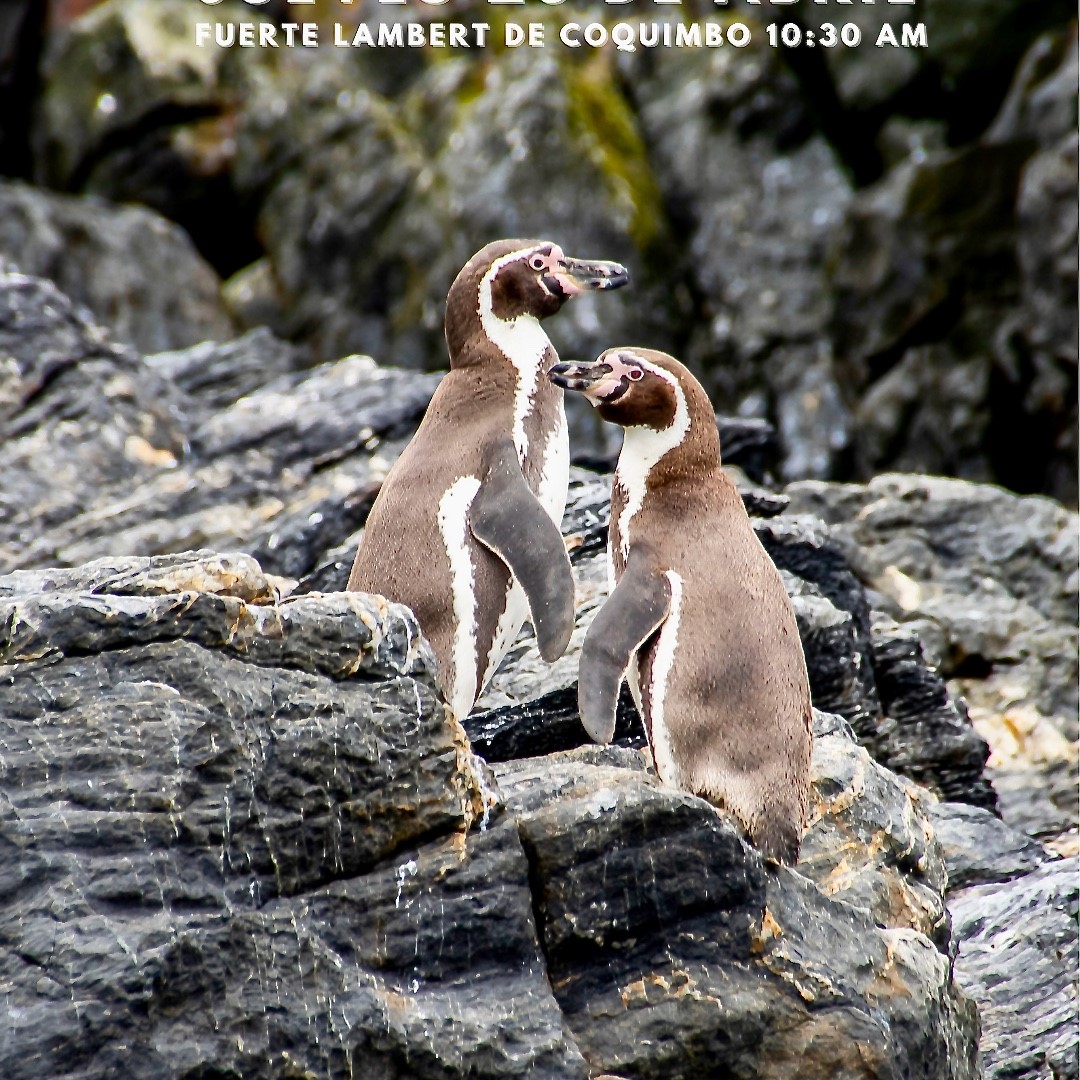La Serena, Landau April 25, 2024.
Just in time for the World Penguin Day on April 25, Sphenisco-chile in La Serena launched the “Humboldt Penguin - Symbolic Bird of the Humboldt Current” campaign. Since the beginning of April Sphenisco employees have been promoting the protection of the globally significant ecosystem as well as a sustainable management plan for the agreed-upon marine protection zone by utilizing the literary competition “The Humboldt Archipelago in 110 Words” and the radio talk show “Sintonia“ in an unusual way. The objective of the “Humboldt Penguin - Symbolic Bird of the Humboldt Current” initiative is to motivate citizens, civil society groups and authorities to publicly stand up for the protection of the Humboldt Archipelago. For this purpose Sphenisco-chile and Red Aves have published the following appeal.
“Faced with the risk of extinction of one of the most highly symbolic and acknowledged birds of our continent, on April 25,2024 civil society organizations, together with scientists, regional governments and local communities in Peru and Chile, declare the „Humboldt Penguin as the symbolic bird of the significant Humboldt Current ecosystem“.
With this declaration, we request authorities in Chile and Peru as well as civil society groups to increase their efforts to reduce human-induced damage to the Humboldt penguin's nesting, feeding and resting grounds and to implement both national and international treaties such as
- the Convention on Biological Diversity,
- the Paris Agreement on Climate Change and
- to comply with national and global conservation plans and strategies to reduce the bycatch of seabirds.
The Humboldt penguin (Spheniscus humboldti) is a seabird, which is endemic to the Humboldt Current. It is classified as “vulnerable” according to the Supreme Decree of the Secretary General of the Presidency No. 50/2008 of the State of Chile and the International Union for Conservation of Nature (IUCN 2009) and as “endangered” (en peligro) according to the Supreme Decree No. 034-2004-AG of the Ministry of Agriculture of Peru.
Its distribution ranges from the island of Foca (5°12'S) off the bay of Islilla in the province of Paita (Piura - Peru) up to the island of Metalqui (42°11'S; 74°8'W) in Chile. The most important breeding colonies in Chile (from north to south) are the islands Pan de Azúcar, Grande de Atacama, Chañaral, Choros, Tilgo, and the islands Pájaros and Cachagua*, all located in north-central Chile. In Peru, the most important colonies are located in Punta San Juan de Marcona and on the Ballestas Islands in the Paracas National Reserve, Ica region.
The Pacific coast of South America is highly influenced by the Humboldt Current. The current is one of the largest and most productive marine ecosystems in the world, representing an eastern border current directed northwards with important upwelling centers (Thiel et al., 2007). In this system, the penguin and other seabirds find food close to nesting colonies located on the above-mentioned offshore islands. The islands are the breeding habitat of the Humboldt penguin and include the Humboldt Archipelago and Cachagua Island in Chile as well as Punta San Juan de Marcona and the Ballestas Islands in Peru.
The Humboldt penguin is considered to be an indicator of the state of the local ecosystem (Boersma et. al. 2007, Boersma 2008), displaying the situation respectively the productivity of the sea, which also have an impact on populations living there.
In the last few decades, the population of the Humboldt penguin, as well as that of other seabirds, has drastically declined so much that scientists predict the extinction of the penguin in less than fifty years, if suitable conservation measures are not taken to fight the causes of this threat. In addition, you should keep in mind that the Humboldt penguin is an “umbrella species” (higher-order species) and measures to combat its threats not only protect this species, but also other species and their habitat that are affected by the same threats. It is therefore crucial that government agencies and civil society groups take action to help conserve the species and their habitat and ensure that both turn out to be sustainable.
Considering persistent threats such as the establishment of industrial activities close to breeding and feeding grounds, marine pollution from solid waste and plastics, violations of their natural habitat, unintended death through fishing gear and overfishing, we declare the Humboldt Penguin the symbolic bird of the Humboldt Current in order to draw the attention of authorities to the need to comply with international biodiversity conservation commitments. The undersigning institutions and organizations commit to engage in changing fishing practices in the Pacific and to promote care and protection of nesting and feeding grounds to ensure the conservation of the species and their natural habitat, the Humboldt Current.”
* (Simeone et al. 2003, Vianna et al. 2014, Wallace & Araya 2015)
W.K.
Note:
The declaration by Sphenisco-chile and red aves entitled “Declaración - Pingüino de Humboldt: Ave Insignia del Gran Ecosistema Marino de la Corriente de Humboldt” was translated by deepl.
translated into English by Angelika Veelken



